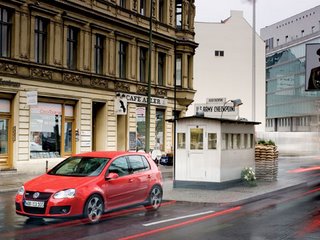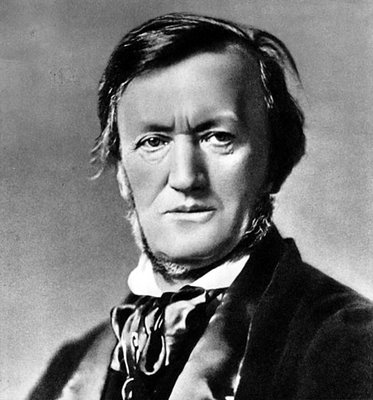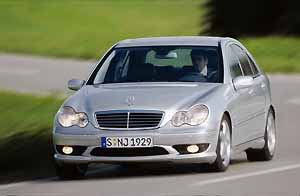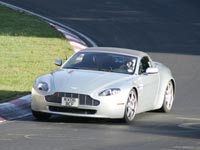 The original Volkswagen Rabbit was an excellent small car. Unfortunately, VW soon began to Americanize it, thinking we wanted more luxury features. We didn't. It was already the best in its class, and the embellishments watered down all its German-engineered appeal. If there was anything else we wanted from the nerdy Rabbit, it was her hot little sister, the Rabbit GTI.
The original Volkswagen Rabbit was an excellent small car. Unfortunately, VW soon began to Americanize it, thinking we wanted more luxury features. We didn't. It was already the best in its class, and the embellishments watered down all its German-engineered appeal. If there was anything else we wanted from the nerdy Rabbit, it was her hot little sister, the Rabbit GTI.
Someone in Wolfsburg must have been listening, because the GTI blasted onto U.S. shores in 1982, embarrassing sports cars with its giggle-inducing handling and brisk acceleration. It may have been based on an economy car, but you never would have known it from behind the wheel. The GTI had performance you'd never have expected from its tall, boxy shape; cargo capacity that belied its size; and an image that allowed it to rub shoulders with cars costing twice as much. The hugely successful GTI established VW's image in America as the manufacturer of affordable, fun-to-drive, sporty small cars. 
The second-generation GTI further reinforced that image. The GTI reached its zenith in 1987 when the sixteen-valve model--featuring a screaming, 7200-rpm engine and an upgraded suspension--joined the lineup.
But then VW got confused, and the GTI lost its focus as a driver's car. Top-of-the-line third- and fourth-generation versions got a silky smooth VR6 engine that was an aural masterpiece, but the engine's heft made an already front-heavy car even more so. Throw in other out-of-place luxury features, and the once-athletic GTI became a lumbering, understeering heavyweight.
Not that you would have known it. Volkswagen's clever ad agencies continued to capitalize on the promise of the GTI, yelling Fahrvergnügen! and Drivers Wanted!, even when the cars didn't really live up to their legacy.

But now, nearly twenty-five years after the original GTI wooed us with its curves (or, rather, its penchant for taking them at high speeds), the new, fifth-generation GTI is again a wolf in, um, Rabbit's clothing. There is no luxury pretense here--this hot econobox has cool plaid cloth seats, a couple of basic dials to adjust the climate control, and, most important, a chassis that loves to dance.
The terminal understeer that sucked all the Fahrvergnügen from the previous cars is gone, replaced with agile responses, quick turn-in, and lots of liftoff oversteer. You feel little body roll from the driver's seat, and, except for the occasional surprise bottoming-out, the GTI's suspension is tuned so well that you don't even notice it working.

VW engineers (including, presumably, the guy with the white coat in the TV ads) wanted to make sure you'd notice the GTI's throaty growl at low revs, so they added a tube to carry the sound from the engine's air intake tract into the passenger compartment. While you're listening to the sweet music from the direct-injection, sixteen-valve four-cylinder, you'll be pleasantly surprised how far you get thrown back into the supportive seat. With almost no lag, the 2.0-liter turbo makes tremendous torque from an ultralow 2500 rpm, and it pulls strongly all the way to its 6900-rpm fuel cutoff.
The controls work so harmoniously that you feel instantly comfortable driving the GTI hard. The shifter is so precise you never miss a shift. The electric power steering is well weighted and spot-on accurate, and the brake pedal gives progressive, reassuring feedback.
For 2007, VW is giving America even more GTI good stuff, in the form of a four-door body. Previous U.S.-market GTIs have had only two doors, but the four-door GTI gives maximum performance and maximum utility in a small package. The back seat is entirely livable, especially when you don't have to convince your friends to contort themselves over a folded front seat to get there. And, when the rear seats are folded, the four-door swallows piles of cargo that almost appear bigger than the car itself.
The two extra doors will cost you $500, and if you're particularly fond of your rear-seat buddies, you can protect them with side-impact air bags for an additional $350. The four-door weighs only 62 pounds more than the two-door, so you won't notice much difference in the way it drives.

This new, more versatile GTI represents a great value and comes standard with a six-speed manual transmission. For another $1075, you can get the dual-clutch DSG, which is the best manu-matic in the business. All 2007 GTIs gain a standard tire-pressure monitoring system, an auxiliary audio input in the glove box, and impact-optimized headrests for the standard seats. Further updates are expected mid-year, as are, unfortunately, some cost-cutting measures. The 2006 model's headlight washers will be phased out, and the soft-touch material used on the doors and the dash apparently was too expensive, because it's being replaced with harder, cheaper plastic.
None of those changes, however, interferes with bringing the GTI closer to its original mission--to be the most enjoyable jack-of-all-trades on the road. The four-door provides everything we want in an economical, fun, modern car but without making us feel like we've sacrificed anything at all. The GTI really is back.

























